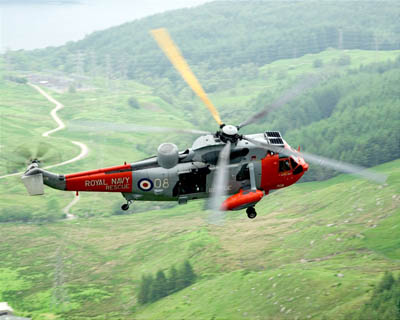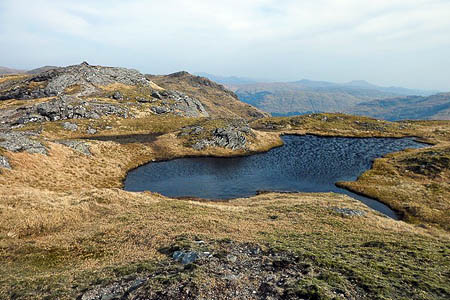A crew member from a Royal Navy rescue helicopter walked 600ft up a Scottish mountain to rescue three walkers trying to navigate in thick cloud with only a smartphone.
The Sea King aircraft, from HMS Gannet in Ayrshire, had to land on the mountainside as visibility dropped to 40m.
So Petty Officer Mike Henson took to the hill in search of the trio, who were 3,000ft up on the munro Beinn a’Chroin in the Trossachs.
The three walkers began their day out in the mountains in clear weather, but were caught out by cloud closing in around them near the summit. None of them had a map or compass with them and they were using a smartphone to navigate.
The trio became disorientated and cold in the misty conditions.
The crew of the Sea King helicopter was returning to its base after a training exercise in Glencoe when it was diverted to the scene following an emergency call to the police by the walkers at 3pm on Tuesday.
Killin Mountain Rescue Team was called out, but police on the ground spotted the helicopter flying over and radioed it for help, enabling it to be on the scene quickly.
Petty Officer Henson, duty aircrewman on board, who is also trained to ambulance technician standard, said: “We were on scene almost immediately, but it quickly became clear that we would not be able to get as close to the walkers as we might have liked – the cloud base was at about 2,300ft.
“Obviously we can’t simply fly into thick cloud, so we managed to put the helicopter down on a rocky buttress as far up as we could.
“Throughout all of this we had managed to communicate with the walkers by mobile phone via the police and had a reasonable idea of where they might be.
“But trying to guide someone down a mountain in thick fog is not ideal, so I decided to leave the helicopter and climb to find them – we had initially thought we would get them to walk towards the sound of the aircraft, but following sound in low visibility is notoriously unpredictable and the noise can also bounce around in the hills, so we didn’t want them to be any more lost than they already were.”
Leaving the helicopter on the mountainside, he climbed 500 to 600ft and found the stranded walkers in about 15 minutes, uninjured, but cold. The visibility was about 40m.
“Fortunately they had a whistle which they were able to blow to give me an indication of where they were – the easiest thing was to tell them to stay in one place and for me to go to them,” the crewman said. “They had been lost for about two hours by the time I got there.
“Although none of them were hurt, the job was still pretty urgent. At the very least it would have taken them two hours to walk off the mountain, even if they had known where they were going.
“If they’d been up there much longer we would have been getting more towards a night time job, with all the extra risk that brings for both the aircraft and the mountain rescue teams, so we avoided the incident escalating into something which certainly could have become much more serious.
“I guess we just happened to be in the right place at the right time.
“On the positive side, the walkers were wearing hi-vis clothing and had got whistles with them, which ended up playing a vital role in me being able to locate them.
“However, it is not a good idea to venture into the mountains, no matter how clear the day, without having a proper map and compass with you, and knowing how to use them.
“It doesn’t take much for the weather to close in around you and mobile phone reception can be notoriously fickle.”
By the time the group got back to the helicopter, the aircraft was running low on fuel and was forced to refuel at Killin after safely delivering the group to the police’s control point near Crianlarich.
The crew returned to base at 5.20pm, after a 2hrs 20mins rescue. The sortie, including the routine training, took a total of 4hrs 20mins.
The Sea King’s crew also included pilots Lieutenant Commanders Craig Sweeney and Geoff Richardson and observer Lieutenant Richie Lightfoot.

